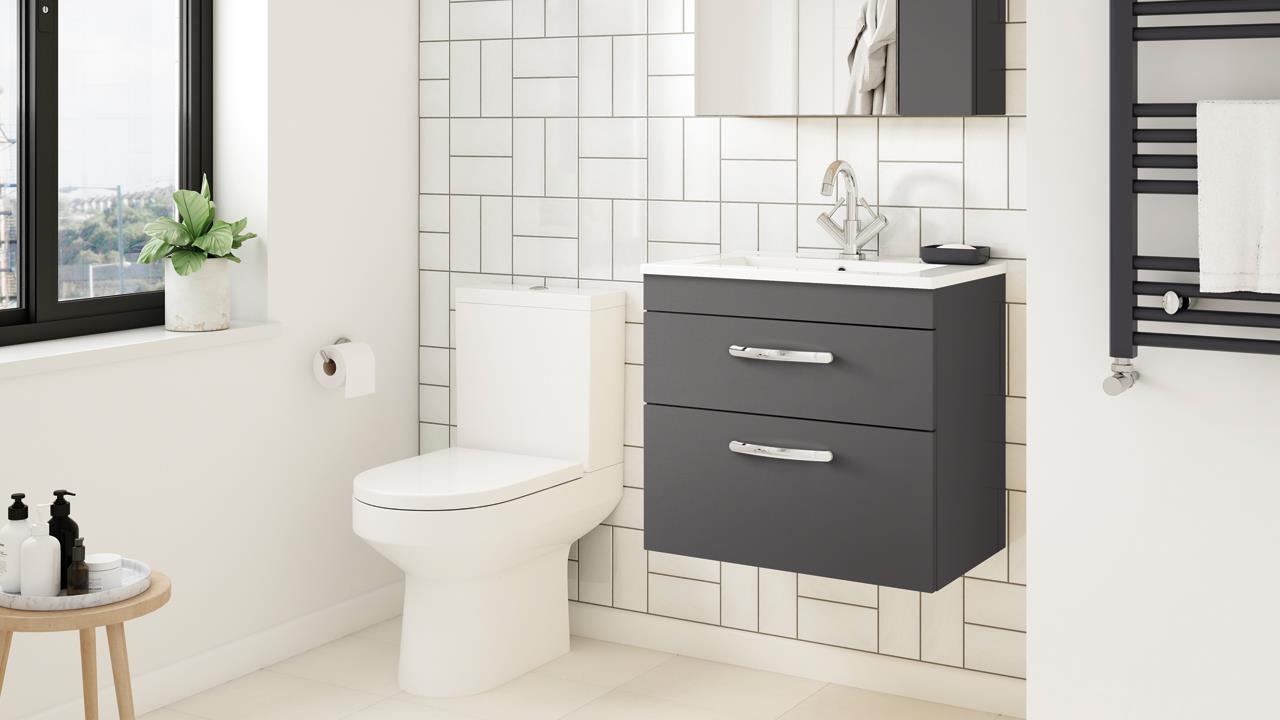

Maximising space in the bathroom is important for many customers, and Mark Cham, Head of Procurement at Plumbase, explains the key considerations installers should make for these types of projects.
The total number of multigenerational households in Britain is around 1.8 million, according to the Cambridge Centre for Housing & Planning Research. With elderly family members opting to live with relatives to avoid isolation and 3.4 million 20-34 year olds now living with parents, according to Civitas, installers need to accommodate for the entire family’s needs. Solutions should not only be inclusive, offering complete accessibility for vulnerable users, they also need to incorporate stylish aesthetics to ensure the whole family is happy.
This may seem a lot to consider when space is limited, but there are solutions available to help families get the most out of their bathroom. Customers are increasingly looking to their installer for advice, so it’s important that you have the relevant expertise and are equipped with the knowledge to recommend the best solution.
Minimising waste
Bathroom furniture is a clever way to utilise every inch of the room and ensure space isn’t wasted. Suppliers are aware that UK bathrooms come in all shapes and sizes, and therefore there is a wide range of options available for even the most awkward and small bathroom.
For example, corner or cloakroom basin units with under-sink storage enable families to optimise space and provide a less cluttered feel, which is particularly handy for families with lots of toiletries or cleaning products that need to be hidden away.
The illusion of increased floor space can also be achieved by factoring in wall-hung basin units, as ‘floating’ furniture instantly makes the bathroom appear bigger.
Vanity units are another ideal option that are growing in popularity, as they not only offer many practical storage space benefits, but also come in a number of shapes, sizes, and styles, meaning families no longer have to compromise on design and their bathroom can stay on-trend.
Additional shelving can also be built in the showering space by the installer, providing another area where toiletries can be stored.
Going the distance
While planning the design of a bathroom is a key priority, it’s just as essential to ensure the relevant health and safety checks are considered. One such element is the distance between sanitaryware.
Before any recommendations are made, measurements of the room’s internal dimensions need to be taken, accounting for doors and windows. Installers should allow room for around 700mm in front of a WC and basin, and at least 1,000mm in front of a bath.
There are services available that help make the design and installation one step easier, including software that can create 2D and 3D views of a customer’s ideal bathroom.
Merchants can now provide in-house design services and access to experts who can ensure every aspect of the bathroom is considered. This allows customers to achieve their perfect design using products from industry-leading brands. The design then acts as a handy reference tool to support the installer when fitting the new bathroom.
Configuration tricks
A simple solution to maximise space is opting for back-to-wall WCs and sanitaryware to provide a streamlined look and conceal any plumbing and waste pipes.
There may not always be room for a pivot door on the bath, which is where shower enclosures with sliding or bi-fold doors present a more practical solution. Sliding doors can often be retrofit and, if the customer chooses a runner that complements the overall bathroom design, they do not have to compromise on style.
Another option is removing the bath altogether and opting for a walk-in corner shower or wetroom rather than a traditional bathroom layout. This is quickly becoming a growing trend, particularly for households that include families of all ages.
Wetrooms not only remove the need for a bath, freeing up space for other sanitaryware or units, they also offer level access. This eliminates trip hazards for vulnerable family members such as young children or those who are less able.
Installers can offer a special touch and achieve spa-style bathrooms by suggesting a wide range of premium shower products, such as rainfall-type showerheads, creating a stylish and luxurious feel.
Creating the vision
It is always a good idea for installers to encourage customers to visit a showroom so they can visualise how they can maximise the space available to them.
Although every bathroom is different, there are options available to meet the unique needs or any customer, regardless of shape, desired design, or family size.
If you'd like to keep up-to-date with the latest developments in the heating and plumbing industry, why not subscribe to our weekly newsletters? Just click the button below and you can ensure all the latest industry news and new product information lands in your inbox every week.